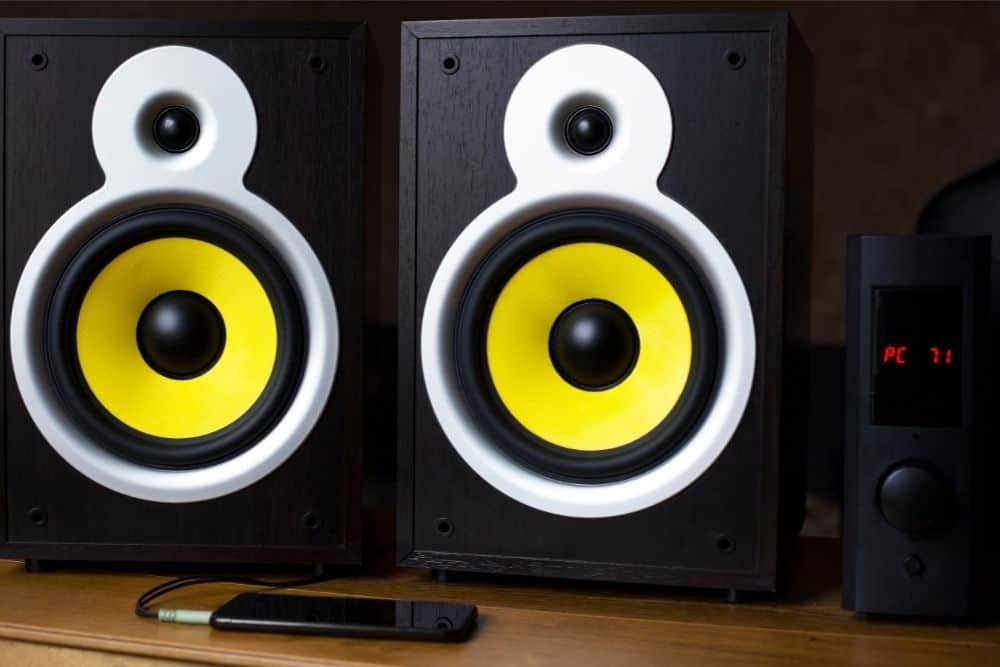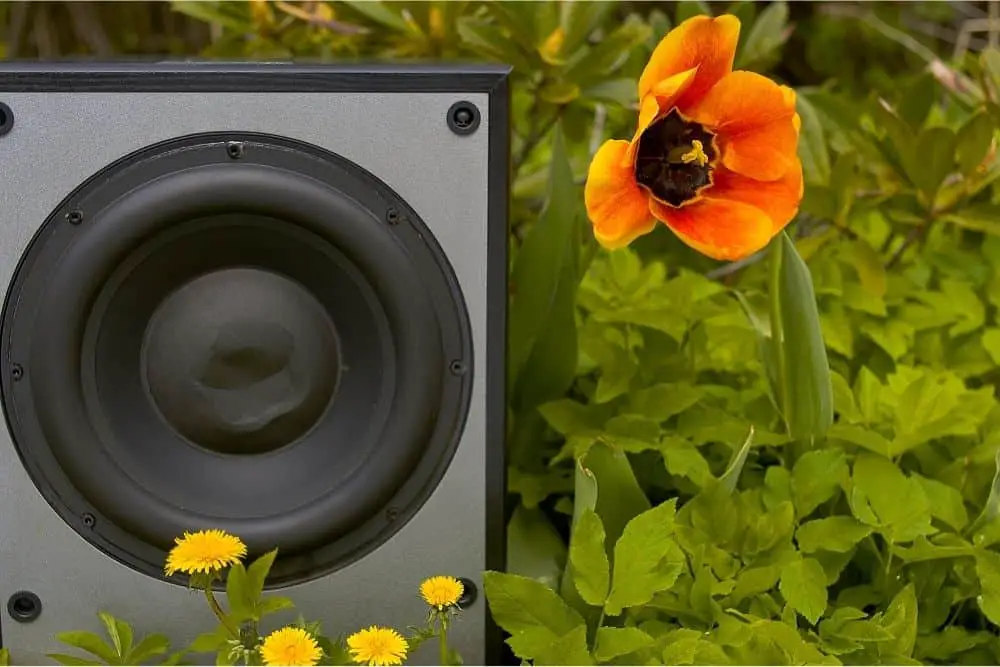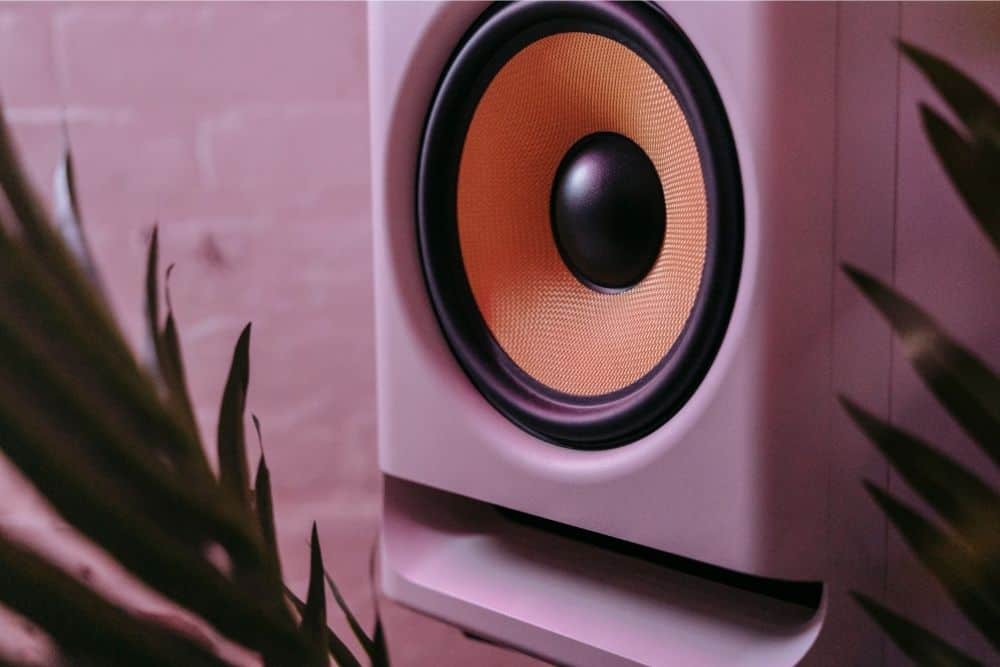If you want to have the best audio experience possible, you will need a good-quality speaker system. But with so many speakers and types of speakers out there, it can become confusing knowing what you need.
You have probably heard of subwoofers. These are powerful pieces of equipment that are designed to reproduce low-pitched audio frequencies. These are known as bass and sub-bass. Not all speakers are the same size.

Therefore, different models offer different and better ranges than others. Think about a choir where you have a soprano, an alto, a tenor, and a bass. Well, this diversity in sounds is the same with speakers and this is why they usually have more than one speaker built into them.
For singers, DJs, and bands, the best way of getting a quality sound system is to have a setup including speakers and subwoofers. Midranges, tweeters, and woofers can also be used to handle the different ranges of notes and sounds in music. As these all work together, the whole range of sound is completely covered resulting in an improved listening experience.
But are subwoofers classified as speakers? Well, there are some differences between the two but, technically speaking, subwoofers are loudspeakers that generate low bass sounds. The main difference between a subwoofer and a regular speaker is the frequency range. Subwoofers are used to reproduce the lowest frequencies of the audio spectrum and are, therefore, perfect for bass output.
Speakers tend to produce higher frequencies with fewer sound restrictions. Today, we are going to discuss the differences between subwoofers and speakers and find out if a subwoofer really can be considered another form of speaker.
Subwoofers vs speakers
Subwoofers and speakers are both audio systems. However, speakers deliver higher frequencies and offer the best output of sound quality overall.
To understand the differences between the two, we need to first discuss what each apparatus does.
A subwoofer
A subwoofer, or a woofer, is a sound system that produces an output of sound from an audio system. Subwoofers are used to reproduce low-pitched audio frequencies, usually referred to as “bass.”
A speaker
A speaker is simply a loudspeaker that also produces sounds. However, speakers amplify the sound output to listeners in a certain space. Rather than reproduce low-frequency sounds, speakers produce higher frequencies that are easier for our ears to hear.
Speakers refer to electro-acoustic transducers. These convert an electrical signal into sound. The main job of a speaker is to output the different variations found in a certain electrical signal. This causes the device to move with and increase the sound waves through the air.
A subwoofer’s design

When we study the construction of a subwoofer, it is quite different from any other speaker. Its structure is generally wooden or plastic with a loudspeaker enclosure which is installed with one or more woofers.
These woofers can be placed in specific areas within the structure and where they are placed can have a direct impact on numerous subwoofer variants. These variants are determined by the size, cost, efficiency, distortion characteristics, and power that they possess. Different designs include horn-loaded, bass reflex, bandpass, and infinite baffle subwoofers.
Subwoofer frequencies
A subwoofer will typically deliver a frequency in the range of 20 to 200 Hz. With woofers, their professional sounds will generally be below 100 Hz while subwoofers will be below 80 Hz.
This frequency range usually depends on its use. For home use, the frequency tends to be around that 20 to 200 Hz mark while bands, DJs, and singers will be around the 80 Hz mark.
Different types of subwoofers
Subwoofers can come with a couple of configurations:
- Active
- Passive
An active subwoofer has a unit built into it. Therefore, it will need its own AC power supply. For live performances or home theater setups, the subwoofer is usually active.
A passive subwoofer is powered by an internal amplifier which needs to have enough power to sustain all bass effects through the subwoofer. The amplification that is required is usually determined by the size of the speaker.
There are a range of subwoofer types out there. These include:
- Ported subwoofers
- Passive radiator subwoofers
- Sealed cabinet subwoofers
- Front and down firing subwoofers
- Horn loaded subwoofers
- Bandpass subwoofers
Ported subwoofers – These models have an additional hole or port that lets air escape, usually through a tube. This can effectively boost the bass level of a subwoofer. This is because the escaping air also contains certain bass frequencies that would, otherwise, have no escape route. Therefore, you are left with a thicker, richer bass sound.
Passive radiator subwoofers – These are like ported subwoofers on steroids. Instead of the extra port, two passive radiators are wired to the amp. These radiators move, allowing sound to escape from the speaker in a similar way to a port but with a wider range of frequencies. Such a design allows for a large, very wide-ranging sound in quite small speaker systems and this is why they are often used in cars.
Sealed cabinet subwoofers – Sealed cabinets do not have a port or passive radiator. These types of subwoofers only have one route for bass to escape. While the depth of the bass can be lost, the sound becomes more well-rounded with fewer booms and peaks experienced.
Front and down firing subwoofers – This name refers to the placement of the speaker inside the subwoofer unit. These models tend to have a speaker pointing forward allowing sound to travel to the front and sides of the structure. If a subwoofer is downward facing, the sound will travel toward the ground and in front of the unit. This is especially useful if speakers are placed on stands or on shelving.
Horn-loaded subwoofers – In general, horn-loaded units are louder than others. In higher frequency ranges, these subwoofers offer more direction in sounds.
This is done by focusing the sound that would usually leak but, instead, spread it in different directions while being channeled through a longhorn speaker. This is why these units are often used in large arenas or venues where sound needs to travel further but still with precision.
Bandpass subwoofers – Bandpass units have a more intricate and complex design which allows for a cleaner, more natural bass output within certain frequencies. You can specify the levels of bass from the speakers that you desire with absolute precision.
These models tend to have two separated chambers with one generally having a port to release radiation from its front cone. You will often see bandpass subwoofers used in professional live settings such as arena gigs or in subwoofer cabinets for car audio uses.
So, what is a speaker?

Now we know what a subwoofer is, let’s understand what a speaker has to offer. A speaker is just a loudspeaker. This refers to an electro-acoustic transducer. In other words, it converts an electrical signal into sound.
The variations of an electrical signal cause a speaker to move in sync with it. Therefore, sound waves are sent out through the air. Speakers are what cause maximum distortion and the differences in what we hear.
The main difference between a subwoofer and a speaker is down to their frequency range. As we stated above:
- Subwoofers are used to generate the lower frequencies of the audio spectrum and are ideal for bass sounds
- Speakers are used to deliver higher frequencies such as mid and treble range
Sounds produced by instruments such as harps or violins have high-frequency sound waves so are picked up by speakers. A bass drum or bass guitar is better picked up by a subwoofer. However, even a regular speaker can reproduce all of these different sound frequencies but with fluctuating intensity.
Speakers are commonly used with computers and other audio systems. Whether they are active or passive, speakers generally serve the same purpose: to generate and amplify sounds over a certain area.
The pros and cons of a subwoofer
When considering whether you want or need a subwoofer, you should weigh up the pros and cons to see if they meet your requirements.
Pros
- When you add an active subwoofer, it improves the mid-range sound, reduces strain on your audio system, and delivers deeper bass frequencies
- The main speakers of your sound system experience less stress as the subwoofer produces lower frequencies. The speakers can just focus on higher frequencies with better clarity at higher volumes
- The overall sound quality is vastly improved as the main speakers don’t have to play any low frequencies
- Because subwoofers and main speakers share different ranges of sounds, they tend to sound much better than a full-range speaker
Cons:
- Many models are not very well made. As a result, they regularly come with technical difficulties and complications
- These units can not be used on their own as they need to be combined with speakers at all times
The pro and cons of speakers
Pros
- Speakers tend to cost less and are more budget-friendly when compared to subs
- They can create very good sounds even without the use of a subwoofer
- They can produce sounds effectively on their own without a subwoofer
Cons
- Unlike subwoofers, speakers can not reproduce lower frequencies and deep bass sounds as well
In Summary
In theory, a subwoofer can be used as a speaker but this isn’t recommended. This is because subwoofers can only reach lower frequencies of music so the mids, highs, and vocals will be almost non-existent with poor quality and clarity.
For the best audio experience, pair your speakers with a subwoofer so you can enjoy all of the frequencies in the best way possible.
